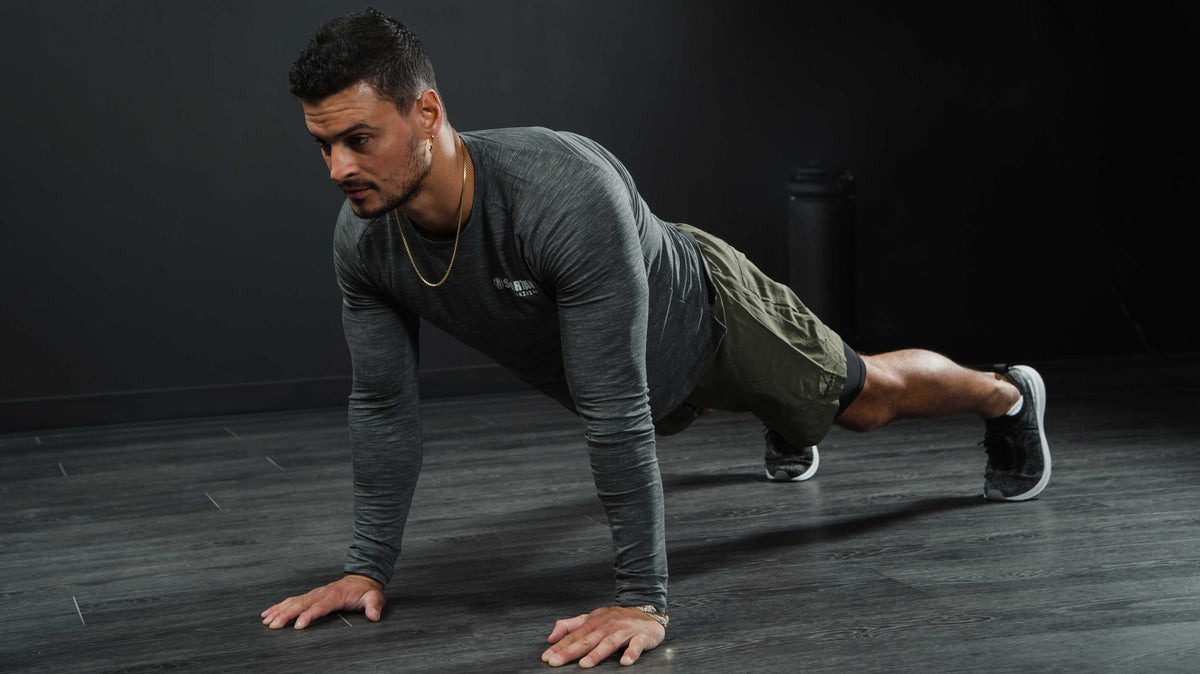Home>Misc>Featured>Which Part Of The FitnessGram Physical Fitness Test Measures Abdominal Strength And Endurance?


Featured
Which Part Of The FitnessGram Physical Fitness Test Measures Abdominal Strength And Endurance?
Modified: January 2, 2024
Discover the key component of abdominal strength and endurance in the Fitnessgram Physical Fitness Test. Featured.
Introduction
The Fitnessgram Physical Fitness Test is an assessment tool that provides valuable insights into an individual’s overall fitness level. It is widely used in schools, sports programs, and fitness centers to evaluate and track the physical abilities and strengths of individuals. The test consists of various components that measure different aspects of fitness, including cardiovascular endurance, muscular strength and endurance, flexibility, and body composition.
One important component of the Fitnessgram Physical Fitness Test is the measurement of abdominal strength and endurance. The abdominal muscles play a crucial role in maintaining stability, supporting the back, and facilitating movements of the upper and lower body. Having strong and enduring abdominal muscles not only enhances physical performance but also reduces the risk of injuries and improves overall posture.
In this article, we will explore the significance of abdominal strength and endurance and how it is measured in the Fitnessgram Physical Fitness Test. Understanding the importance of this component can motivate individuals to focus on strengthening their core muscles and achieve optimal fitness levels.
Overview of Fitnessgram Physical Fitness Test
The Fitnessgram Physical Fitness Test is a comprehensive assessment that provides a holistic view of an individual’s physical fitness. Developed by The Cooper Institute, it is widely used in educational institutions, athletic programs, and fitness facilities as a standardized tool to evaluate and monitor fitness levels.
The test is designed to assess various components of fitness, including cardiovascular endurance, muscular strength and endurance, flexibility, and body composition. By evaluating these different aspects, the Fitnessgram Physical Fitness Test helps individuals gain a better understanding of their overall fitness levels and identify areas for improvement.
One of the key strengths of the Fitnessgram Physical Fitness Test is its adaptability to a wide range of ages and fitness levels. The test is suitable for children, adolescents, and adults, and can be modified to accommodate individuals with disabilities or special needs. This inclusivity makes it a valuable tool for assessing and promoting physical fitness for everyone.
Furthermore, the Fitnessgram Physical Fitness Test employs age and gender-specific standards to evaluate individual performance. This helps provide a benchmark for comparison and allows individuals to set realistic goals based on their age and gender group. The standards are based on extensive research and provide a comprehensive assessment of fitness levels.
To ensure accuracy and consistency, the Fitnessgram Physical Fitness Test follows specific protocols and guidelines. Trained assessors or physical education teachers administer the test, ensuring that proper techniques and protocols are followed during each assessment. This helps maintain the integrity and validity of the results.
Overall, the Fitnessgram Physical Fitness Test serves as a valuable tool to assess and monitor an individual’s physical fitness. It not only provides insights into one’s current fitness level but also serves as a motivational tool to improve and maintain a healthy lifestyle.
Components of Fitnessgram Physical Fitness Test
The Fitnessgram Physical Fitness Test consists of several components that assess different aspects of physical fitness. These components are carefully selected to provide a comprehensive view of an individual’s overall fitness level. Let’s explore each component:
- Cardiovascular Endurance: This component measures the efficiency of the cardiovascular system and the ability to sustain physical activity over a prolonged period. It is assessed through activities such as the one-mile run, pacer test, or step test.
- Muscular Strength: Muscular strength is the ability of muscles to exert force against resistance. It is assessed by exercises like the push-up and the modified pull-up, which measure upper body strength, and the curl-up, which measures abdominal strength.
- Muscular Endurance: This component evaluates the ability of muscles to sustain repeated contractions or maintain a static contraction over time. It is assessed through exercises like the plank and the partial curl-up, which measure core and abdominal endurance, respectively.
- Flexibility: Flexibility assesses the range of motion of a joint or a group of joints. It is evaluated through the sit-and-reach test, which measures the flexibility of the hamstrings and lower back.
- Body Composition: Body composition refers to the percentage of body fat compared to lean body mass. It is a critical component of overall fitness and is assessed through various methods, including skinfold measurements or bioelectrical impedance analysis (BIA).
These components collectively provide a holistic view of an individual’s physical fitness level by assessing different elements, including cardiovascular health, muscular strength and endurance, flexibility, and body composition. By evaluating these aspects, individuals can identify areas for improvement and design targeted fitness programs to enhance overall performance.
Importance of Abdominal Strength and Endurance
Abdominal strength and endurance play a crucial role in overall physical fitness and well-being. The abdominal muscles, also known as the core muscles, are vital for maintaining proper posture, stability, and balance. Here are some key reasons why developing and maintaining strong abdominal muscles is essential:
- Supports Spinal Health: Strong abdominal muscles help support the spine, reducing the risk of back injuries and chronic pain. A strong core promotes proper alignment, decreases stress on the spine, and improves overall posture.
- Enhances Sports Performance: Many sports and physical activities require movements that engage the core muscles. From running and jumping to lifting and throwing, a strong core provides a solid foundation for generating power and transferring forces efficiently. It improves agility, balance, and overall performance.
- Reduces the Risk of Injury: Weak abdominal muscles can lead to muscle imbalances and compensatory movements, increasing the risk of injuries, especially in the lower back and hips. Strengthening these muscles helps stabilize the body, reducing the strain on other structures and minimizing the risk of injuries.
- Aids in Daily Functional Movements: Having strong abdominal muscles improves the ability to perform everyday activities with ease. Whether it’s bending down to pick up an object, carrying groceries, or maintaining stability during various tasks, a strong core enhances overall functionality and reduces strain on other body parts.
- Improves Posture and Body Alignment: Weak abdominal muscles can lead to postural deficiencies, such as excessive curvature of the spine or forward-leaning posture. Strengthening the core muscles helps maintain proper alignment, reducing the risk of postural issues and associated discomfort.
- Enhances Core Stability: The core muscles provide stability and support for the entire body. By strengthening the abdominal muscles, individuals can improve their core stability, which is crucial for maintaining balance and preventing falls or accidents.
Overall, developing and maintaining abdominal strength and endurance is essential for overall fitness and well-being. It not only enhances physical performance but also helps prevent injuries and improves daily functional movements. By incorporating exercises that target the core muscles, individuals can reap the benefits of a strong and stable core.
Measurement of Abdominal Strength and Endurance in Fitnessgram Physical Fitness Test
In the Fitnessgram Physical Fitness Test, the measurement of abdominal strength and endurance is an important component for assessing overall fitness. The test utilizes specific exercises to evaluate the strength and endurance of the abdominal muscles. The primary exercise utilized for this purpose is the curl-up test, which targets the rectus abdominis muscle.
The curl-up test requires the individual to lie on their back with knees bent, feet flat on the ground, and hands placed on the thighs. With the arms in a fixed position, the individual performs a controlled movement of flexing the spine to lift the head, shoulders, and upper back off the ground. The movement is then reversed, gradually lowering the upper body back to the ground.
The Fitnessgram Physical Fitness Test has standardized protocols for the curl-up test to ensure accurate and consistent measurements. These protocols specify the pace and rhythm of the movement, the number of repetitions, and the criteria for proper form. The test is conducted under the supervision of a trained assessor or physical education teacher.
The number of curl-ups an individual can perform correctly within a specific time frame determines their level of abdominal strength and endurance. The Fitnessgram test assesses the performance based on age and gender-specific standards, providing a benchmark for comparison to peers in the same age and gender group.
The measurement of abdominal strength and endurance in the Fitnessgram Physical Fitness Test provides valuable information about an individual’s core fitness. It evaluates the ability of the abdominal muscles to contract and sustain effort over time, providing a measure of strength and endurance. Individuals with greater abdominal strength and endurance typically achieve higher scores on the test.
It is essential to note that the curl-up test is just one method of assessing abdominal strength and endurance. Other exercises and tests, such as the plank, may also be used to evaluate core stability and endurance. The Fitnessgram test focuses on the curl-up test due to its simplicity, accessibility, and consistent measurement criteria.
By including the measurement of abdominal strength and endurance in the Fitnessgram Physical Fitness Test, individuals can gain insight into their core fitness level. This component encourages individuals to work on strengthening their abdominal muscles and improving their overall core strength and stability.
Conclusion
The Fitnessgram Physical Fitness Test provides a comprehensive assessment of an individual’s physical fitness, including the measurement of abdominal strength and endurance. The test recognizes the importance of strong abdominal muscles in maintaining stability, preventing injuries, and enhancing overall physical performance.
Through the measurement of abdominal strength and endurance using exercises like the curl-up test, the Fitnessgram test evaluates an individual’s core strength and provides valuable insights into their overall fitness level. By following standardized protocols and age and gender-specific standards, the test ensures accuracy and provides a benchmark for comparison.
Abdominal strength and endurance are vital for supporting spinal health, enhancing sports performance, reducing the risk of injuries, improving daily functional movements, and promoting good posture. It is crucial to recognize the significance of a strong and stable core in achieving optimal physical fitness and well-being.
The Fitnessgram Physical Fitness Test encourages individuals to focus on strengthening their abdominal muscles and core through targeted exercises. By doing so, they can improve their overall fitness, reduce the risk of injuries, and enhance their performance in various physical activities.
In conclusion, the measurement of abdominal strength and endurance in the Fitnessgram Physical Fitness Test plays a key role in assessing and promoting physical fitness. By developing and maintaining strong abdominal muscles, individuals can enhance their overall fitness level, improve their posture and stability, and optimize their physical performance. Incorporating exercises that target the core muscles will not only improve test scores but also contribute to overall health and well-being.









